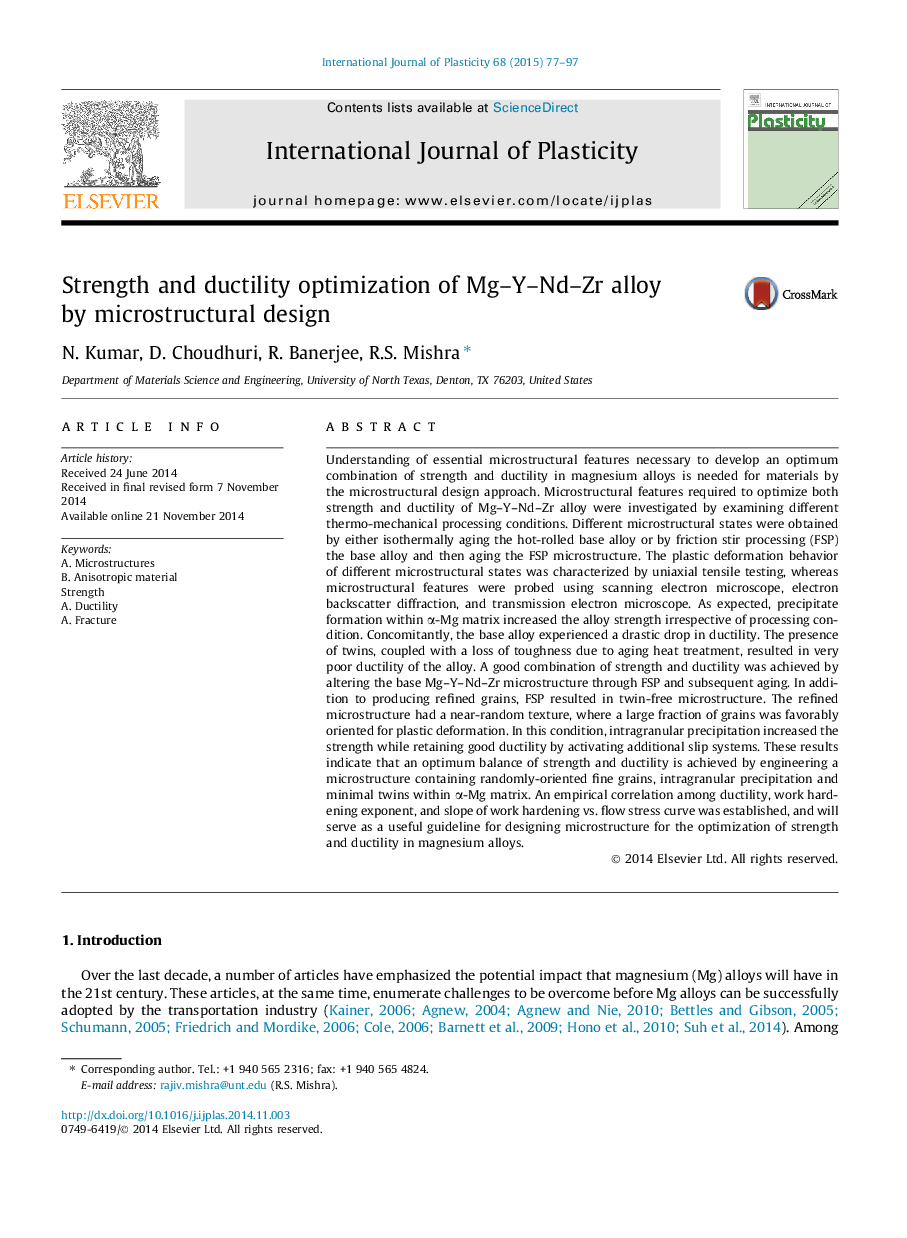| کد مقاله | کد نشریه | سال انتشار | مقاله انگلیسی | نسخه تمام متن |
|---|---|---|---|---|
| 786645 | 1465605 | 2015 | 21 صفحه PDF | دانلود رایگان |

• An empirical relationship was developed between ductility and rate of recovery for Mg alloys.
• Tensile twins elimination and grain refinement resulted in improvement in ductility.
• Yield strength anisotropy reduced due to intragranular precipitation.
• Taylor factor based analysis to establish active slip system in various microstructural states.
• Microstructural elements required for optimum strength–ductility combination were identified.
Understanding of essential microstructural features necessary to develop an optimum combination of strength and ductility in magnesium alloys is needed for materials by the microstructural design approach. Microstructural features required to optimize both strength and ductility of Mg–Y–Nd–Zr alloy were investigated by examining different thermo-mechanical processing conditions. Different microstructural states were obtained by either isothermally aging the hot-rolled base alloy or by friction stir processing (FSP) the base alloy and then aging the FSP microstructure. The plastic deformation behavior of different microstructural states was characterized by uniaxial tensile testing, whereas microstructural features were probed using scanning electron microscope, electron backscatter diffraction, and transmission electron microscope. As expected, precipitate formation within α-Mg matrix increased the alloy strength irrespective of processing condition. Concomitantly, the base alloy experienced a drastic drop in ductility. The presence of twins, coupled with a loss of toughness due to aging heat treatment, resulted in very poor ductility of the alloy. A good combination of strength and ductility was achieved by altering the base Mg–Y–Nd–Zr microstructure through FSP and subsequent aging. In addition to producing refined grains, FSP resulted in twin-free microstructure. The refined microstructure had a near-random texture, where a large fraction of grains was favorably oriented for plastic deformation. In this condition, intragranular precipitation increased the strength while retaining good ductility by activating additional slip systems. These results indicate that an optimum balance of strength and ductility is achieved by engineering a microstructure containing randomly-oriented fine grains, intragranular precipitation and minimal twins within α-Mg matrix. An empirical correlation among ductility, work hardening exponent, and slope of work hardening vs. flow stress curve was established, and will serve as a useful guideline for designing microstructure for the optimization of strength and ductility in magnesium alloys.
Journal: International Journal of Plasticity - Volume 68, May 2015, Pages 77–97